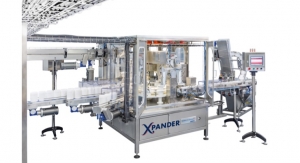04.26.21
Kimberly-Clark’s sales of $4.7 billion in the first quarter of 2021 decreased 5% versus the prior year. The Softex Indonesia acquisition increased sales 2% and changes in foreign currency exchange rates increased sales slightly. Volumes declined 10% compared to an increase of more than 8% in the year-ago period, while net selling prices and product mix each improved 1%.
The volume comparison reflects increased shipments in the year-ago period to support consumer stock up related to the outbreak of Covid-19. The stock up impacted all business segments, in particular consumer tissue, and all major geographies. In addition, volumes in North American consumer products in 2021 were negatively impacted by supply chain disruptions related to severe weather conditions that occurred in February in the southern part of the United States. The disruptions included the temporary shutdown of several company manufacturing facilities and reduced availability of raw materials from suppliers, mostly impacting the company's personal care segment.
In North America, organic sales decreased 10% in consumer products and 8% in K-C Professional. Outside North America, organic sales were down 1% in developing and emerging (D&E) markets and 14% in developed markets.
Chairman and Chief Executive Officer Mike Hsu says, “Our first quarter results and updated outlook reflect a volatile and challenging environment. First quarter comparisons were impacted by Covid-19 related stock up in the year-ago period, consumer tissue category softness and commodity inflation. We also experienced temporary supply chain disruptions related to severe weather conditions in the southern part of the United States. Nonetheless, our market shares remain healthy overall as we leverage our enhanced commercial capabilities. In addition, we continue to achieve strong cost savings, return cash to shareholders and are taking decisive actions to mitigate commodity headwinds.”
In the Personal Care segment, first quarter sales of $2.5 billion increased 2%. The Softex Indonesia acquisition increased sales 4% while changes in currency rates reduced sales approximately 1%. Volumes decreased approximately 3% while product mix improved 1%. First quarter operating profit of $481 million decreased 9%. Results were impacted by input cost inflation, lower volumes, other manufacturing cost increases and unfavorable currency transaction effects. The comparison benefited from cost savings, improved product mix and lower general and administrative costs.
Sales in North America decreased 7%. Volumes fell approximately 7%, driven by the previously mentioned supply chain disruptions, and were down in all major product categories.
Sales in D&E markets increased 12%. The Softex Indonesia acquisition increased sales by 11% while changes in currency rates reduced sales 5%. Volumes rose 4% and the combined impact of changes in net selling prices and product mix increased sales 2%. Organic sales increased in Brazil, China, Eastern Europe, India and South Africa, but declined in Israel and most of the rest of Latin America.
Sales in developed markets outside North America (Australia, South Korea and Western/Central Europe) increased 5%. Changes in currency rates increased sales 9%. Volumes fell 5% while product mix improved 1%.
The volume comparison reflects increased shipments in the year-ago period to support consumer stock up related to the outbreak of Covid-19. The stock up impacted all business segments, in particular consumer tissue, and all major geographies. In addition, volumes in North American consumer products in 2021 were negatively impacted by supply chain disruptions related to severe weather conditions that occurred in February in the southern part of the United States. The disruptions included the temporary shutdown of several company manufacturing facilities and reduced availability of raw materials from suppliers, mostly impacting the company's personal care segment.
In North America, organic sales decreased 10% in consumer products and 8% in K-C Professional. Outside North America, organic sales were down 1% in developing and emerging (D&E) markets and 14% in developed markets.
Chairman and Chief Executive Officer Mike Hsu says, “Our first quarter results and updated outlook reflect a volatile and challenging environment. First quarter comparisons were impacted by Covid-19 related stock up in the year-ago period, consumer tissue category softness and commodity inflation. We also experienced temporary supply chain disruptions related to severe weather conditions in the southern part of the United States. Nonetheless, our market shares remain healthy overall as we leverage our enhanced commercial capabilities. In addition, we continue to achieve strong cost savings, return cash to shareholders and are taking decisive actions to mitigate commodity headwinds.”
In the Personal Care segment, first quarter sales of $2.5 billion increased 2%. The Softex Indonesia acquisition increased sales 4% while changes in currency rates reduced sales approximately 1%. Volumes decreased approximately 3% while product mix improved 1%. First quarter operating profit of $481 million decreased 9%. Results were impacted by input cost inflation, lower volumes, other manufacturing cost increases and unfavorable currency transaction effects. The comparison benefited from cost savings, improved product mix and lower general and administrative costs.
Sales in North America decreased 7%. Volumes fell approximately 7%, driven by the previously mentioned supply chain disruptions, and were down in all major product categories.
Sales in D&E markets increased 12%. The Softex Indonesia acquisition increased sales by 11% while changes in currency rates reduced sales 5%. Volumes rose 4% and the combined impact of changes in net selling prices and product mix increased sales 2%. Organic sales increased in Brazil, China, Eastern Europe, India and South Africa, but declined in Israel and most of the rest of Latin America.
Sales in developed markets outside North America (Australia, South Korea and Western/Central Europe) increased 5%. Changes in currency rates increased sales 9%. Volumes fell 5% while product mix improved 1%.






